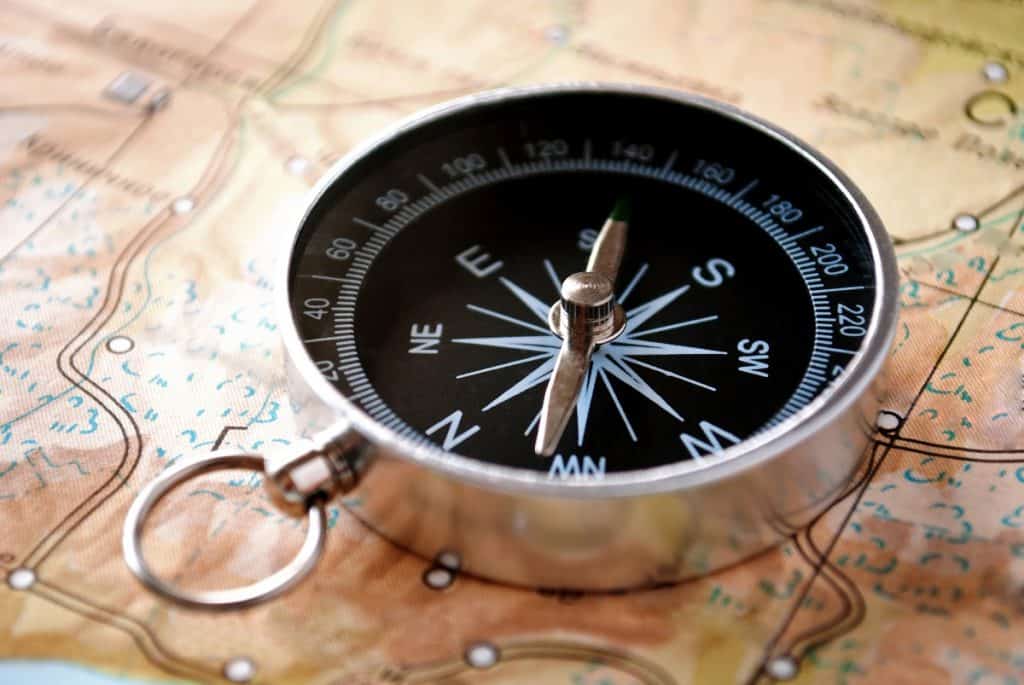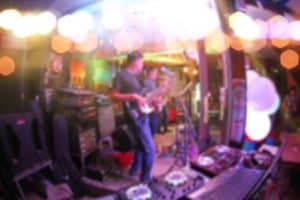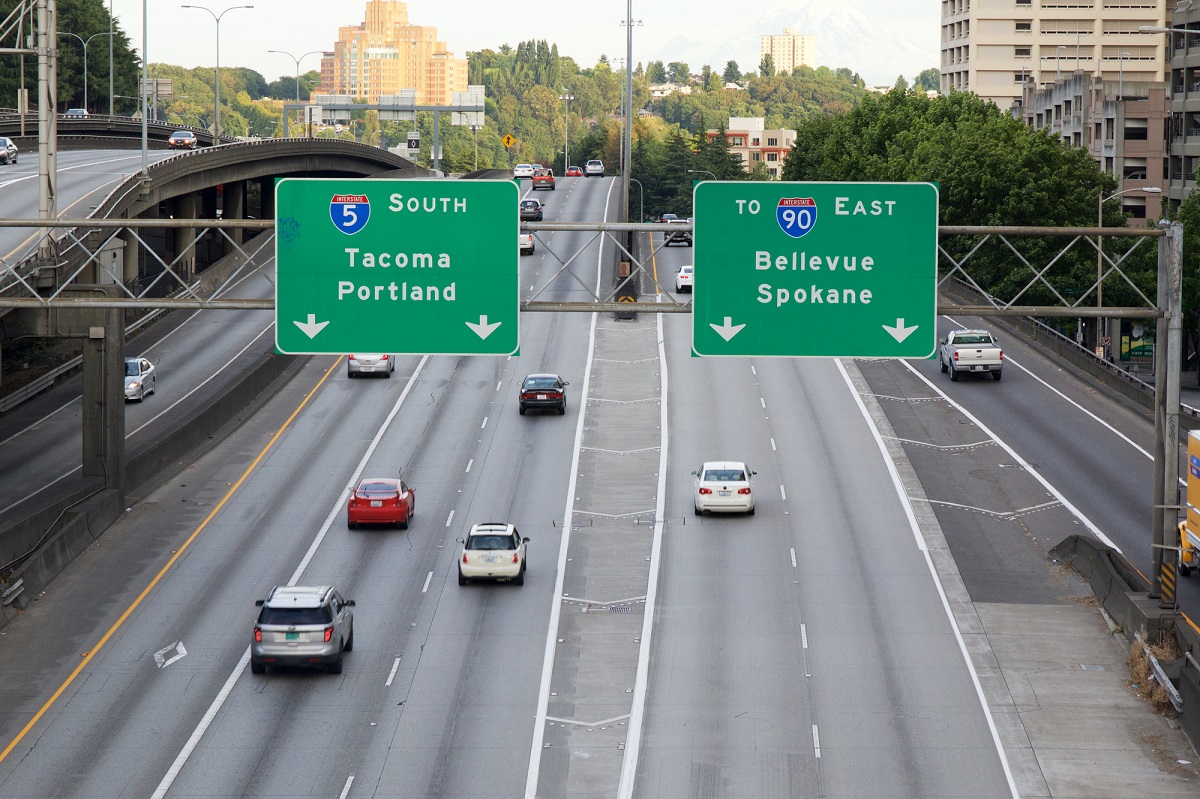The following outdoor activities feature popular year-round sport and recreation pursuits around Puget Sound and the Olympic Peninsula. Our list focuses on activities that are relatively easy to learn and pursue. Newcomers to these recreational pursuits can quickly get introduced to the basics without a lot of time or effort and often at little or no cost for an entire day of fun.
This list of sports and recreation activities take place in the city and in remote wilderness areas, on the water and off, with feet firmly planted on the ground, or gazing into the distance–even all the way to the end of the universe. These wide-ranging activities appeal to a variety of skills and interests, including families with children. In fact, elements of each activity can change with the season, offering new and interesting perspectives every month of the year.
Most are free or have nominal costs, such as the purchase of kite to fly or a compass for geocaching, or purchase or rental of binoculars for birdwatching or wildlife watching. Otherwise, you simply need to dress for the weather or conditions and bring your sense of adventure.
All of these activities can provide you, your friends, or family with boundless opportunities for interesting fun-filled days and priceless experiences.
Beachcombing
There are scads of places to go beachcombing along the Pacific Ocean on the Washington Coast, as well as the beaches and estuaries along Puget Sound. Low tide after a winter storm presents some of the best beachcombing finds as new treasures have washed ashore. Beach exploration is a favorite activity for many and winter time can be an especially rewarding time for collectors of beach glass and driftwood. It’s a great family activity, even for fairly young children.
There are some special cautions for beachcombing, especially when hiking coastal ocean beaches, which we detail below. Of course dress for the weather, in layers, etc. These cautions are followed by some recommended beaches to get you started on this recreational pastime.
Leave No Trace Principles are not regulations. They are guidelines to help public park and wilderness users leave the area as beautiful and as natural as they found it for the enjoyment of all and for future generations. Here’s where to find the seven principles: https://lnt.org/learn/7-principles
Wear appropriate footwear. Use caution around tide pools, both to protect fragile sea life, as well as ankles from twisting on slippery rocks. Wear water shoes or rubber boots to protect your feet from sharp objects. Walk carefully around soft sand to avoiding sinking into muck.
Know your limits. For newcomers to day hiking, 4 to 6 miles is a good maximum until you know your capabilities. Experienced trekkers can do up to twice as much (8 to 12 miles) comfortably in one day. Short winter days and long, long summer days can affect your ability to complete these trail distances.
Use caution around driftwood. Be wary of driftwood, which can be hazardous if being tossed in the surf or bobbing on shore by tidal waters. Use caution when climbing on driftwood as logs may be unstable.
Fishing and shellfish harvesting for salmon, clams, crabs, and other delicious seafoods, including seaweed, is regulated by the Washington Fish & Wildlife Department. Fishing seasons are determined by available catch and require a license. More info: https://wdfw.wa.gov/fishing/
Know the tide–don’t guess! Be sure to check a tide chart before you head out, especially on coastal beaches, as return access may be blocked during high tides. ALWAYS carry a tide table (and know how to read it), a topographic map (showing the terrain and alternate trails off the beach), and a watch or something to tell time. DO NOT GUESS–know when high tide will occur and plan your trip accordingly to return before the tide is against you. Know that approaching storms and strong winds can significantly elevate tides. Be attentive to your surroundings and never underestimate the power of the Pacific Ocean. Find tide information at the following sites:
- https://www.saltwatertides.com/dynamic.dir/washingtonsites.html
- https://tidesandcurrents.noaa.gov/tide_predictions.html?gid=1415
- https://www.tides.net/washington/
Recommended Washington Coast and Olympic Peninsula beachcombing beaches. Here are some popular, accessible locations for beachcombing at any time of year in far flung corners of the coastal areas and around Puget Sound (listed clockwise starting from the southwest Washington Coast, going up and around the peninsula):
- Long Beach Peninsula map and guides. Long Beach is located in the southwest corner of Washington state, about 165 miles southeast of Seattle. There are 7 official access points to the main stretch of beach on the thin peninsula. You can download and print maps, save them to your smartphone, or pick them up at the Visitors Bureau in Seaview and at many local businesses.
- Cape Disappointment State Park, Grayland Beach State Park, and Griffiths-Priday State Park are some other great beachcombing spots on the Washington Coast.
- Kalaloch and Ruby Beach is located farther north on the southwest coast of Washington, about 180 miles west of Seattle. Kalaloch Beach is one of the most visited areas of Olympic National Park, where you’ll find pristine beaches along wild coastline with abundant marine and bird wildlife. North of Ruby Beach, the Hoh River creates a natural boundary. Beach 4 is known as an excellent location for exploration at low tides.
- Rialto Beach between Kalaloch and Ozette has spectacular scenery and tide pools at low tide in this coastal area at the mouth of the Quillayute River.
- Ozette is located on the northwestern coast of the Olympic Peninsula. The Cape Alava Loop, aka Ozette Triangle is two hikes in one: a forest stroll and a walk on the beach. Take the Cape Alava Trail out to the beach and back for a 6.2 mile hike, or continue south along the beach to connect up with the Sand Point Trail for a 9.4 mile loop.
- Salt Creek Recreation Area on the northern Olympic Peninsula, about 100 miles northwest of Seattle (by ferry) is one of Clallam County’s premier parks. The 196-acre park includes upland forests, rocky bluffs, rocky tide pools, sandy beach, Salt Creek access, campsites, and panoramic views. The Tongue Point Marine Sanctuary is the eastern-most open rock intertidal habitat in the Strait of Juan de Fuca. Sea life is visible during low tide via a short walk to the tide pools.
- Dungeness National Wildlife Refuge on the northern Olympic Peninsula, about 80 miles northwest of Seattle (by ferry) is one of the world’s longest sand spits and shelters a bay rich in marine life. The 5.5 mile trail ends at a lighthouse and is easily accessible at low tide, becoming much more difficult when the tide comes in.
- Sequim Bay State Park located just inside Puget Sound on the Olympic Peninsula, about 65 miles northwest of Seattle (by ferry) is a year-round, 92-acre marine camping park with 4,900+ feet of saltwater coast in the Sequim “rain shadow”, one of the driest micro-climates west of the Cascade Mountain.
- Washington Trails Association Hiking Guide. Search for hikes with a “Coast” feature and you’ll find over 150 hikes. You can further refine your search by looking for parks in a certain region, with a high rating, or variable distance.
Recommended Puget Sound beachcombing beaches. Here are popular beachcoming spots around Puget Sound. These beaches are generally much closer to Seattle and very accessible (listed north to south throughout the Puget Sound region).
- Deception Pass State Park on the north end of Whidey Island is Washington’s most-visited state park. The park spreads over 3,854 acres, a marine and camping park with 77,000 feet of saltwater shoreline and 33,900 feet of freshwater shoreline on three lakes. The park is actually located on two islands — Fidalgo to the north and Whidbey to the south. The Canoe Pass and Deception Pass bridges connect the two islands, creating a gateway for exploration. A good spot for beach exploration is North Beach.
- Joseph Whidbey State Park on Whidbey Island near the town of Oak Harbor is a 206-acre day-use park with 3,100 feet of saltwater shoreline on the Strait of Juan de Fuca in northern Puget Sound.
- Eglon Beach Park north of Kingston (33000 Eglon Rd NE)
- Alki Beach Park in West Seattle is a great 2.5 mile walk any time of year. The beach offers spectacular views of Puget Sound, the Olympic Mountains, and all sorts of water craft on Puget Sound. The beach enjoys minus tides that reveal a wide expanse of sandy beach.
- Lowman Beach in West Seattle is small, about 300 feet of rocky, saltwater shoreline a few blocks north of Lincoln Park and a great spot for some beachcombing at low tide.
- Illahee State Park east of Bremerton is a 86-acre, marine camping park with 1,785 feet of saltwater frontage overlooking Bainbridge Island.
- Anderson Point Park south of Port Orchard is a 66-acre park with nearly 2,000 feet of picturesque saltwater shoreline overlooking Vashon Island.
- Dash Point State Park in Federal Way is a 461-acre camping park with 3,301 feet of saltwater shoreline. The beach provides unobstructed views of Puget Sound and abundant sea-life.
- Titlow Park in Tacoma is a large grassy flat 75-acre park located near a lagoon on Puget Sound and one of the best sunset-watching spots in Tacoma.
- Seattle Aquarium Beach Naturalist program trains local volunteer who care about Puget Sound beaches to help people learn about and enjoy area shorelines. During summer (May-August), you can find volunteer guides during low tides at beaches throughout the Puget Sound region. They can offer more in-depth information about the marine life you may see during your visit.
Return to top (list of outdoor activities)
Bird Watching
Birdwatching is a pleasant outdoor activity that can be done in every season. And, it is relatively easy to learn and inexpensive to do. It is a popular activity in the Puget Sound region as well as across the state of Washington and one of the fastest growing recreational activities in the country.
Millions of birds visit our natural habitats. Humans and birds need the same things – clean air, water, and land. They are indicators of the state’s environmental health because they respond rapidly to climatic and other changes. So, the future health of birds and humans is inextricably linked.
To get started bird watching, join your local Audubon or birdwatching group, or attend any of the bird festivals in the Puget Sound region throughout the year.
For more information, visit our resource list for birdwatching in the Puget Sound region, including birdwatching groups and birding events throughout the year.
Return to top (list of outdoor activities)
Day Hiking
Day hikes are generally short walks that begin and end in one day, without requiring an overnight stay. A day hike can be as short as an hour or two, or one that keeps you away from dawn to dusk. A day hike can be a stroll on a flat path around a lake, take you to the top of a mountain peak, or amble through lush forest. The choice is yours.
To assist you in your quest of this recreational activity, the following resources will help you plan day hikes around Washington State:
The Mountaineers is a nonprofit outdoor community of 13,000+ active members in the Pacific Northwest that helps everyone get outside safely and responsibly through books, training, and events. Volunteers, supported by a small full-time staff, lead hundreds of monthly hikes and classes, including topics such as navigation, first aid, and photography. Most members of The Mountaineers recommend that you take along carefully selected items to survive the unexpected. These items, known as the “Ten Essentials” date back to The Mountaineers climbing courses in the 1930s. Variations on the list include Ten Essentials. While you may elect not to carry every item in these lists, the purpose of items in your day pack should answer two basic questions:
- Can you respond positively to an accident or emergency?
- Can you safely survive a night (or more) outside?
Washington Trail Association (WTA) offers a comprehensive online Hiking Guide for Washington State that includes content from guidebooks, user submitted info, and data compiled by WTA. The searchable database lets you choose hikes in every corner of the state, based on features (such as lakes or mountain views), whether you plan to bring dogs or kids along, and other hike criteria such as length and elevation gain. User submitted comments can be especially helpful in clarifying details of the route or tips for enjoying the scenery in a particular location.
AllTrails helps people explore the outdoors with it’s collection of trail maps, reviews, and photos crowdsourced from its community registered users. AllTrails operates websites and mobile apps that provide to provide outdoor enthusiasts with the tools and information they need to plan, record, and share their adventures. The searchable database lets you find trails based on criteria you choose, such as difficulty, terrain features, and accessibility for locations around Washington State, as well as locations across the country. Upgrade the free mobile app to one with more features, such as offline maps, customization, and without ads.
Return to top (list of outdoor activities)
Dragon Boating
Dragon boating has its roots 2,000 years ago in southeast China. The sport has a rich history of ceremonial tradition, honoring dragons as the rulers of all waters. A classic dragon has the head of an ox; a deer’s antlers; the mane of a horse; the body and scales of a snake; the claws of an eagle and the tail of a fish. With its strength and power the Dragon rides the clouds in the sky and commands the wind, mist and rain.
A dragon boat seats 20 people with a “sweep” to steer and a drummer pounding loudly above the thrashing paddles. The sport accommodates a wide spectrum of skill levels ranging from novice to competitive. Recreational teams are fun, social groups with a focus on team building and alternative form of exercise. Competitors in the sport demonstrate strength, endurance, and teamwork with harmony of purpose. There is no other paddle sport in which 22 people work together to create a team result. It is the fastest growing international team water sport.
In the Puget Sound region, tap into the dragon boating community by connecting with one of the following groups. Most practice year-round, rain or shine (but not during windy or freezing conditions) and all welcome newcomers to the sport:
- Seattle SAKE is Seattle’s oldest and largest dragon boat club with paddles in Seattle and Olympia.
- Seattle Flying Dragon Boat Club paddles several days a week on Lake Union in Seattle and Lake Washington in Kenmore.
- Sand Point Paddling Club (SPPC) is located in Seattle’s Magnuson Park and paddles several nights a week on Lake Washington.
- North Puget Sound Dragon Boat Club on Whidbey Island in Oak Harbor paddles a couple nights a week.
Return to top (list of outdoor activities)
Geocaching
Geocaching is an outdoor treasure hunt featuring modern technology, exploration, discovery. Simply put, you use GPS technology to look for hidden caches. You navigate to these “geocaches” using an app or GPS device. When you find a geocache, you sign the log, and share your experience–geocache owners love reading these experiences.
Each geocache is assigned a number. You will often see this number on the geocache container and the logbook. There are well over 4,000 geocaches in the Seattle area. More than 3 million geocaches are logged worldwide, in over 190 countries and on all seven continents. So geocaching makes a great travel activity, no matter the destination.
Every geocache has a difficulty (D) rating and a terrain (T) rating on a 5-star scale, known (not surprisingly) as the D/T rating. Ratings vary from one community to the next. A 3-star terrain in Banff, Canada, is a different experience than a 3-star terrain in Amsterdam, Holland. So a cache is rated based on standards in the prevailing area. Rating guidance is provided on Geocaching.com, but managed by each geocaching community.
By the way, anyone can create a numbered geocache. Before you do, it’s recommended that you find at least 20 caches before you create and hide one, to better understand what makes an interesting experience for other geocachers. Following the geocaching guidelines in your community is important to protect the game and to balance the needs and rights of the geocaching community with the environment to ensure that geocaching can be enjoyed for years to come.
Geocaching HQ is located in the Fremont neighborhood of Seattle. HQ maintains the global list of geocaches, develops the primary geocaching mobile applications, and maintains the Geocaching.com website to support the global game.
To get started with geocaching, create an account online or through the Geocaching® app to view a map of geocaches near you.
For more information about how to get started with geocaching, visit https://www.geocaching.com/play.
Return to top (list of outdoor activities)
Identifying Native Plants
Bird and wildlife watching are great outdoor activities. But another type of “wildlife” that can make for a great past time is identifying native plants. It’s a great way to encourage you and your family to get outdoors. You’ll have fun doing it and get some exercise in the process!
To get started, listed below are free online native plant identification resources. These guides provide the information you need to explore parks in King Country and throughout Washington State. If you have kids, some of these resources provide information geared towards children that you can share on walks with them.
- Native plant resource list for the Pacific Northwest. This list, maintained by King County government provides you with up-to-date resources for learning about northwest native plants.
- Wildflowers-and-Weeds.com can help you Learn to Identify Plants by Families. At the end of this article are links to guides for different plant families complete with drawings, photos, and other identification information. These informative guides will forever change the way you look at plants.
- Native plants in public gardens is a comprehensive list of parks throughout King County where you can view native plants. The list includes parks in every corner of the county, including: Bellevue Botanical Garden, Carl S. English Botanical Garden at the Ballard Locks, Daybreak Ethnobotanical Garden at Discovery Park featuring plants useful to Native Americans in the region, Kruckeberg Botanic Garden in Shoreline, Highline Community College campus in Des Moines has a Washington native plant habitat garden, plus many other parks.
- Washington Native Plant Society features on their website Native plant lists throughout the state. Included in the list are popular King County parks including Cougar Mountain, Ravenna Park, Marymoor Park, and Snoqualmie Falls. Many smaller, neighborhood parks also have a native plant list, such as Carkeek Park in north Seattle, Madrona Woods in central Seattle, and Schmitz Park in West Seattle, plus many other locales throughout Washington State.
Finally, the book “Botany in a Day” teaches you to recognize patterns among related plants and is available at local libraries:
- Botany in a Day at Seattle Public Library
- Botany in a Day at King County Library
- Botany in a Day at Tacoma Public Library
- Botany in a Day at Sno-Isle Library
Return to top (list of outdoor activities)
Kite Flying
Kite flying has been around for a couple thousand years. As a recreational pastime, kite flying is a great outdoor activity on days with light winds (not strong winds, which can be difficult or during storms, which can be dangerous). If you are new to the sport, the basic 2-stick diamond kite is inexpensive and a wonderful introduction for children, or the child in you.
Here are places to find kite supplies and to connect with the kite community in Washington State and around the world:
- Washington Kitefliers Association organizes regular festivals, competitions, and kite-building workshops throughout the year. They offer resources for kids and keep a long list of kite shops.
- Whidbey-Island-Kite-Fliers | Facebook is an active community of kite flyers and holds a monthly “fly-in”.
- American Kitefliers Association has thousands of members in 25 countries and promotes the art, history, technology, and practice of building and flying kites.
- Magic Mouse Toys in Seattle’s Pioneer Square has a selection of kites.
- Prism Kite Technology in Seattle and online. Cutting edge kites from $27 and up.
Recommended area parks for kite flying include parks with large open spaces, meadows or beaches with steady winds (listed roughly north to south around the Puget Sound region):
- Bay View State Park in Mount Vernon is a 66-acre camping park with 1,285 feet of saltwater shoreline on Padilla Bay, overlooking the San Juan Islands. The beach makes a great spot for kite flying. In Mount Vernon, you’ll also find GoodwindsKites.com Kiting Supply offering one of the largest selections available for supplies that kite builders need.
- Fort Casey State Park on Whidbey Island is a 999-acre marine camping park with 10,810 feet of saltwater shoreline on Admiralty Inlet on Puget Sound. The park contains a designated remote-control glider area and a parade field popular for kite-flying.
- Fort Worden State Park in Port Townsend on the Olympic Peninsula overlooks Puget Sound along Admiralty Inlet. The 433-acre park was a former U.S. Army installation.
- Lake Tye Park in Monroe is a 64 acre community park surrounding a lake with spectacular views.
- Marina Beach Park in Edmonds features a large green space south of the marina on the shores of Puget Sound.
- Carkeek Park in north Seattle is 220-acres of lush forest, meadows, wetlands, creeks, and beach.
- Golden Garden Park in Seattle’s Ballard neighborhood features wetlands, trails, and wide beach.
- Discovery Park on Seattle’s Magnolia Bluff is a 534-acre natural area park and the largest park in the city, situated on former Fort Lawton. Overlooking Puget Sound, the park offers spectacular views of the western Cascade and eastern Olympic Mountain ranges that flank the city. Features of the park that appeal to kite flyers include beaches and open meadows.
- Magnuson Park in north Seattle has Sand Point Head (aka Kite Hill), a grassy, treeless 35-foot hilltop overlooking the Lake Washington.
- Gas Works Park in Seattle on the north shore of Lake Union has a big hill popular with kite flyers with the city as a backdrop.
- Jefferson Park in south Seattle on Beacon Hill offers stunning views and wide open spaces.
- Jack Block Park and Seacrest Park in West Seattle along Harbor Ave SW are small, less crowded spaces east of Alki Beach Park that can offer good kite flying opportunity, especially on days when Alki is over-run with people.
- Lincoln Park in West Seattle is a large, diverse park with lots of features, including a kite-worthy beach.
- 60 Acres Park near Redmond is a King County Park in the Sammamish River valley on the north side of Redmond features open spaces. More info: http://www.washingtonaerospace.org/60acres.php
- Marymoor Park in Redmond is King County’s most popular park with 640-acres offering a range of recreational activities, amenities, and events.
- Chambers Creek Park in University Place north of Steliacoom is 930-acre site with over two miles of saltwater shoreline and breathtaking mountain and Puget Sound views.
- Long Beach Peninsula map and guides. Long Beach is located in the southwest corner of Washington state, about 165 miles southeast of Seattle. It’s the site of the week-long Washington State International Kite Festival every year in August and home to the World Kite Museum, open weekends in winter and daily in summer.
Return to top (list of outdoor activities)
Orienteering, the sport of navigation
Orienteering is the sport of navigation using a map and sometimes a compass in unfamiliar terrain. It is often by groups at competitive orienteering events or meets. The objective of the event is to find established checkpoints on an orienteering map created by the host organization for the event. After the orienteering meet ends, the course checkpoints are removed.
Permanent orienteering (or “O”) courses can provide anyone with an introduction to orienteering. A permanent O course contains designated checkpoints set up within a park for anyone to use and enjoy. You can practice orienteering alone or with friends as a casual outing. Orienteering is a fun way to get outdoors and enjoy nature, while exercising your body as well as your mind. It’s a sport that is easy for everyone to learn and makes a great family activity.
Cascade Orienteering Club (COC) is a non-profit organization based in Seattle and run primarily by volunteers. It is one of the largest and most active clubs in the country. Membership begins at $14 per year. However, you don’t need to be a member to participate in Cascade events.
Cascade hosts orienteering events year-round in the Puget Sound Area and in the Cascade Mountains during the summer. Most events are open to all and newcomers are welcome. In addition, COC manages several permanent O courses around Washington State, which offer the opportunity to try orienteering on your own.
Return to top (list of outdoor activities)
Stargazing
Stargazing is simply the activity of observing the night sky. It’s a hobby enjoyed by many outdoor enthusiasts and amateur astronomers. Stargazing can be done any time of the year (cloud cover permitting), and is equally enjoyable alone or as a group activity with friends or family.
To enhance your stargazing experience,
- download the current Evening Sky Map at http://www.skymaps.com/downloads.html. This 2-page guide contains a detailed sky map, the current monthly sky calendar, and a descriptive list of the best objects to see with binoculars, a telescope, or using just your eyes. It is suitable for experienced stargazers as well as newcomers to astronomy. Unlike other star charts on the Web, The Evening Sky Map will print clearly on any printer.
- Star Walk smartphone app lets you easily identify stars. The real-time interactive sky map from your location on the screen of your phone enables you to discover stars, planets, and constellations.
There are several organizations in the Puget Sound region where you can learn more about stargazing:
Seattle Astronomical Society (SAS) organizes monthly “star parties” in area parks year-around (weather permitting) that are free, family-friendly, and open to the public. A typical star party includes observing through different types of telescopes provided by SAS members, the opportunity to ask questions, and learn about astronomical topics.
SAS volunteers also offer twice-monthly programs April through October at the Theodor Jacobsen Observatory (TJO) on the University of Washington Seattle campus. These programs include a short presentation, history of the observatory and its beautiful 100 years old telescope, and if the weather permits, stargazing with the telescope.
Tacoma Astronomical Society (TAS) hosts free public viewing sessions each month at Pierce College near Fort Steilacoom in Lakewood (about 10 miles south of Tacoma). On nights with clear skies TAS volunteers provide telescopic observations of the sky. On cloudy nights, indoor lectures and demonstrations will be available. While admission is free, donations are gladly accepted.
For more information about upcoming star parties in the Puget Sound region, including what to bring and do’s and don’ts, visit Stargazing in Seattle.
Return to top (list of outdoor activities)
Watching Wildlife
Watching wildlife is an increasingly popular pursuit for residents and tourists. The goal is to see wildlife in their natural habitat without disrupting their activities.
Unlike many other outdoor activities, special equipment is not required (although binoculars can get you that “up close and personal” view without getting too close). Wildlife watchers need only to dress for the weather, to come equipped with a sense of appreciation for living resources, and to have some knowledge of where to look for them.
Watchable wildlife includes a wide array of Washington state animals: some as common as a familiar bird at a backyard feeder, some briefly passing through on seasonal migrations, and some rarely-seen species that provide the dedicated viewer with a reward for hours of patient waiting.
Wildlife viewing is a pastime that can be enjoyed in any season, in any corner of Washington State, by any age group.
Washington State Department of Fish & Wildlife offers a variety of information about wildlife viewing with various guides and maps, including this Western Washington Interstate 5 Wildlife Viewing Map. You can also find a wildlife area by name, country, or wildlife regions. When driving our highways, looks for binocular signs that mark many wildlife viewing areas.
Before you go, download the latest Weekender Report, which provides up-to-date information on fishing and wildlife recreational opportunities across Washington State. This document is updated periodically throughout the month to reflect seasonal opportunities, and any rules or cautions you need to follow.
Depending on where you go, you may need a Discover Pass. The pass is required on lands and sites managed by Washington State Parks, Washington State Department of Natural Resources (DNR), and Washington Department of Fish and Wildlife (WDFW). A one day Discover pass is $11.50 and an annual pass is $35. The penalty for not having a Discover Pass where one is required is $99.
Return to top (list of outdoor activities)
But wait, there’s more!
- 16 Puget Sound lighthouses you can visit for free.
- Free park entrance days in Washington State.
- 7 affordable winter sports on ice and snow.
- 30 great park trails for kids in the Puget Sound region.
- And here’s a list of 101+ always free things to do for fun.
- More free and cheap things to do every day: Greater Seattle on the Cheap event calendar.
- Still more ideas for frugal fun: Greater Seattle on the Cheap home page.
Upcoming free things to do
Here are the free events on our calendar for the next 30 days. The items listed first each day highlighted by a photo are featured events that we or our advertisers don’t want you to miss.

Map and compass for outdoor adventure – DepoistPhotos.com








